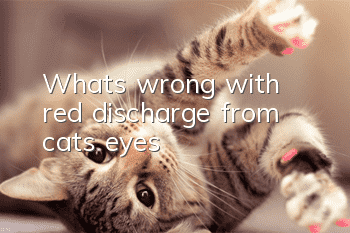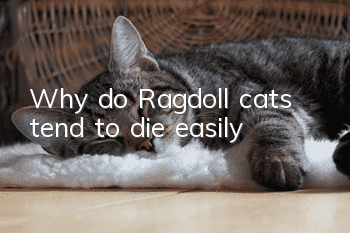Why do cats cry reddish-brown tears?

Cats shed reddish-brown tears may be because the tears are oxidized by the air, thus forming reddish-brown. As long as the cat’s eyes have no other symptoms, you can clean them regularly. If the cat has other abnormalities besides reddish-brown discharge, such as excessive eye discharge, red and swollen eyes, lethargy, sneezing, etc., it may be due to excessive salty diet, eye inflammation, or foreign matter entering the eyes or cat's nose. If it is caused by bronchitis and other reasons, it is recommended to seek medical treatment in time and check the detailed cause before giving symptomatic treatment.
1. Tears oxidize to red
If the cat has no other symptoms in its eyes and sheds reddish-brown tears, it may be because the tears are oxidized when exposed to oxygen and then turn reddish-brown. This is normal. The owner only needs to clean the cat's eyes regularly and does not need to worry too much.
2. Too salty food
If the fat and salt content in the cat’s daily food is too high, or if the cat often eats human meals, it will easily cause the body to get angry and shed reddish-brown tears. In this situation, it is necessary to adjust the cat's diet in time, keep the diet light, and let the cat drink more water. For the tears shed by the cat, the owner can wipe the cat's tears with a wet towel in time.
3. Eye inflammation
If the cat not only sheds reddish-brown tears, but also has symptoms such as red and swollen eyes and increased discharge, it may be that the eyes are infected with bacteria or viruses, leading to eye inflammation such as conjunctivitis. It is recommended to consult a pet doctor in time for medication. heal.
4. Foreign objects enter the eyes
Reddish-brown tears in cats’ eyes may also be caused by foreign objects entering the eyes, such as bath liquid, hair, sand, etc. Once these substances enter the eyes, they will have a mechanical impact and cause tears. For relatively small foreign bodies, owners can clean the cat’s eyes with physiological saline, allowing the foreign body to flow out naturally with the physiological saline, and then use antibacterial and anti-inflammatory eye drops to prevent infection. If the foreign body is relatively large, the cat needs to be sent to a pet hospital where a professional pet doctor will remove it.
5. Cat nasal branch
If the cat, in addition to shedding reddish-brown tears, also has symptoms such as listlessness, sneezing, coughing, runny nose, increased eye discharge, adhesion of the upper and lower eyelids, etc., it is likely to have feline rhinal bronchitis. It is recommended that the owner consult a doctor in time. The use of viral interferon and lysine preparations can effectively inhibit virus reproduction and thus play a therapeutic role. However, after treatment of nasal congestion, the cat may remain poisonous for life.
- What to do if your cat has lip ulcers?
- Three steps to train a cat to pretend to be dead, you can learn it in 8 seconds!
- Why does the cat suddenly urinate everywhere?
- How to train your own pet cat?
- What is the reason why Ragdoll cats have difficulty urinating? How many times a cat urinates a day is normal!
- How does a 2-month-old kitten adapt to its new home?
- Cats always drop a poop on the ground
- Will a cat's teeth grow back if they are broken?
- Will you get rabies if you are bitten by a cat? Do you need a rabies vaccine?
- Are ragdoll cats with point colors scarce? Ragdoll cat breeds!



